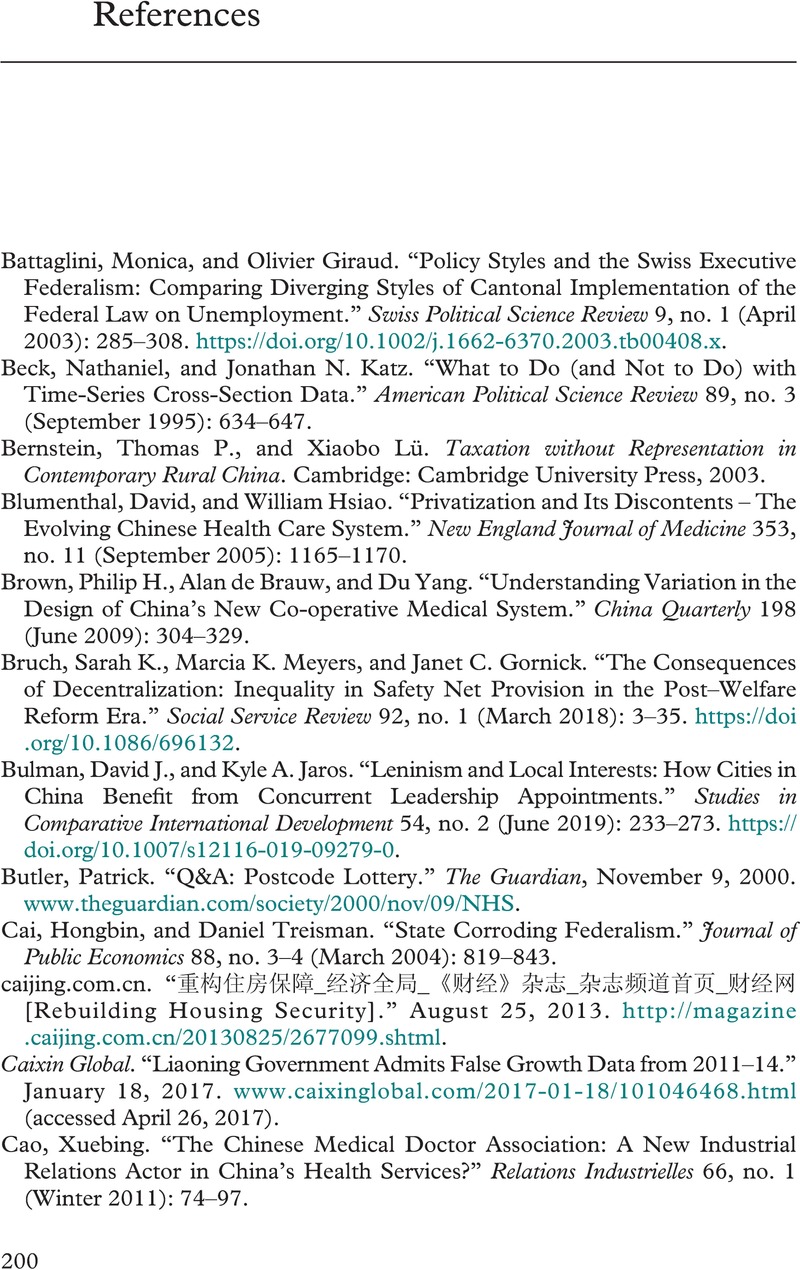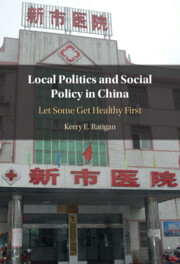Book contents
- Local Politics and Social Policy in China
- Local Politics and Social Policy in China
- Copyright page
- Dedication
- Contents
- Figures
- Tables
- Acknowledgments
- 1 Introduction
- 2 China’s National Health System
- 3 Disaggregating Authoritarian Governance
- 4 The Pragmatist Policy Style
- 5 The Paternalist Policy Style
- 6 The Mixed Policy Style
- 7 Center–Local Relations, Pandemic Politics, and Local Policy Styles in Comparative Perspective
- Book part
- References
- Index
- References
References
Published online by Cambridge University Press: 21 July 2022
- Local Politics and Social Policy in China
- Local Politics and Social Policy in China
- Copyright page
- Dedication
- Contents
- Figures
- Tables
- Acknowledgments
- 1 Introduction
- 2 China’s National Health System
- 3 Disaggregating Authoritarian Governance
- 4 The Pragmatist Policy Style
- 5 The Paternalist Policy Style
- 6 The Mixed Policy Style
- 7 Center–Local Relations, Pandemic Politics, and Local Policy Styles in Comparative Perspective
- Book part
- References
- Index
- References
Summary

- Type
- Chapter
- Information
- Local Politics and Social Policy in ChinaLet Some Get Healthy First, pp. 200 - 217Publisher: Cambridge University PressPrint publication year: 2022



